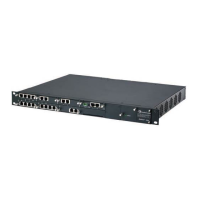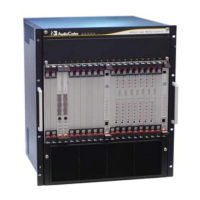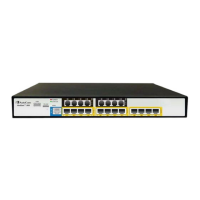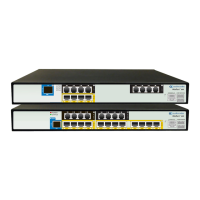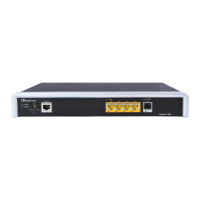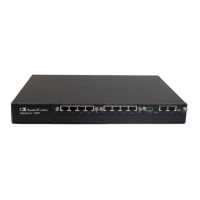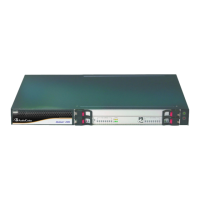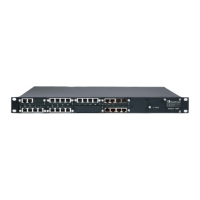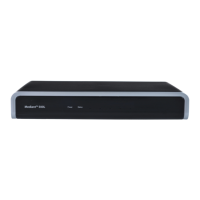User's Manual 1118 Document #: LTRT-10632
Mediant 800B Gateway & E-SBC
Parameter Description
Note: The REGISTER-specific Contact header field value of "*"
applies to all registrations, but it can only be used if the Expires
header field is present with a value of "0".
Add Empty Authorization Header
configure voip > sip-definition
settings > add-empty-author-hdr
[EmptyAuthorizationHeader]
Enables the inclusion of the SIP Authorization header in initial
registration (REGISTER) requests sent by the device.
[0] Disable (default)
[1] Enable
The Authorization header carries the credentials of a user agent
(UA) in a request to a server. The sent REGISTER message
populates the Authorization header with the following parameters:
username - set to the value of the private user identity
realm - set to the domain name of the home network
uri - set to the SIP URI of the domain name of the home
network
nonce - set to an empty value
response - set to an empty value
For example:
Authorization: Digest
username=alice_private@home1.net,
realm=”home1.net”, nonce=””,
response=”e56131d19580cd833064787ecc”
Note: This registration header is according to the IMS 3GPP
TS24.229 and PKT-SP-24.220 specifications.
Add initial Route Header
configure voip > sip-definition
proxy-and-registration > add-init-
rte-hdr
[InitialRouteHeader]
Enables the inclusion of the SIP Route header in initial
registration or re-registration (REGISTER) requests sent by the
device.
[0] Disable (default)
[1] Enable
When the device sends a REGISTER message, the Route
header includes either the Proxy's FQDN, or IP address and port
according to the configured Proxy Set, for example:
Route: <sip:10.10.10.10;lr;transport=udp>
or
Route: <sip: pcscf-
gm.ims.rr.com;lr;transport=udp>
configure voip > sip-definition
settings > ping-pong-keep-alive
[UsePingPongKeepAlive]
Enables the use of the carriage-return and line-feed sequences
(CRLF) Keep-Alive mechanism, according to RFC 5626
“Managing Client-Initiated Connections in the Session Initiation
Protocol (SIP)” for reliable, connection-orientated transport types
such as TCP.
[0] Disable (default)
[1] Enable
The SIP user agent/client (i.e., device) uses a simple periodic
message as a keep-alive mechanism to keep their flow to the
proxy or registrar alive (used for example, to keep NAT bindings
open). For connection-oriented transports such as TCP/TLS this
is based on CRLF. This mechanism uses a client-to-server "ping"
keep-alive and a corresponding server-to-client "pong" message.
This ping-pong sequence allows the client, and optionally the
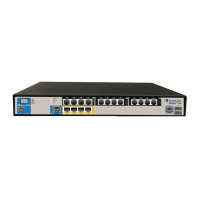
